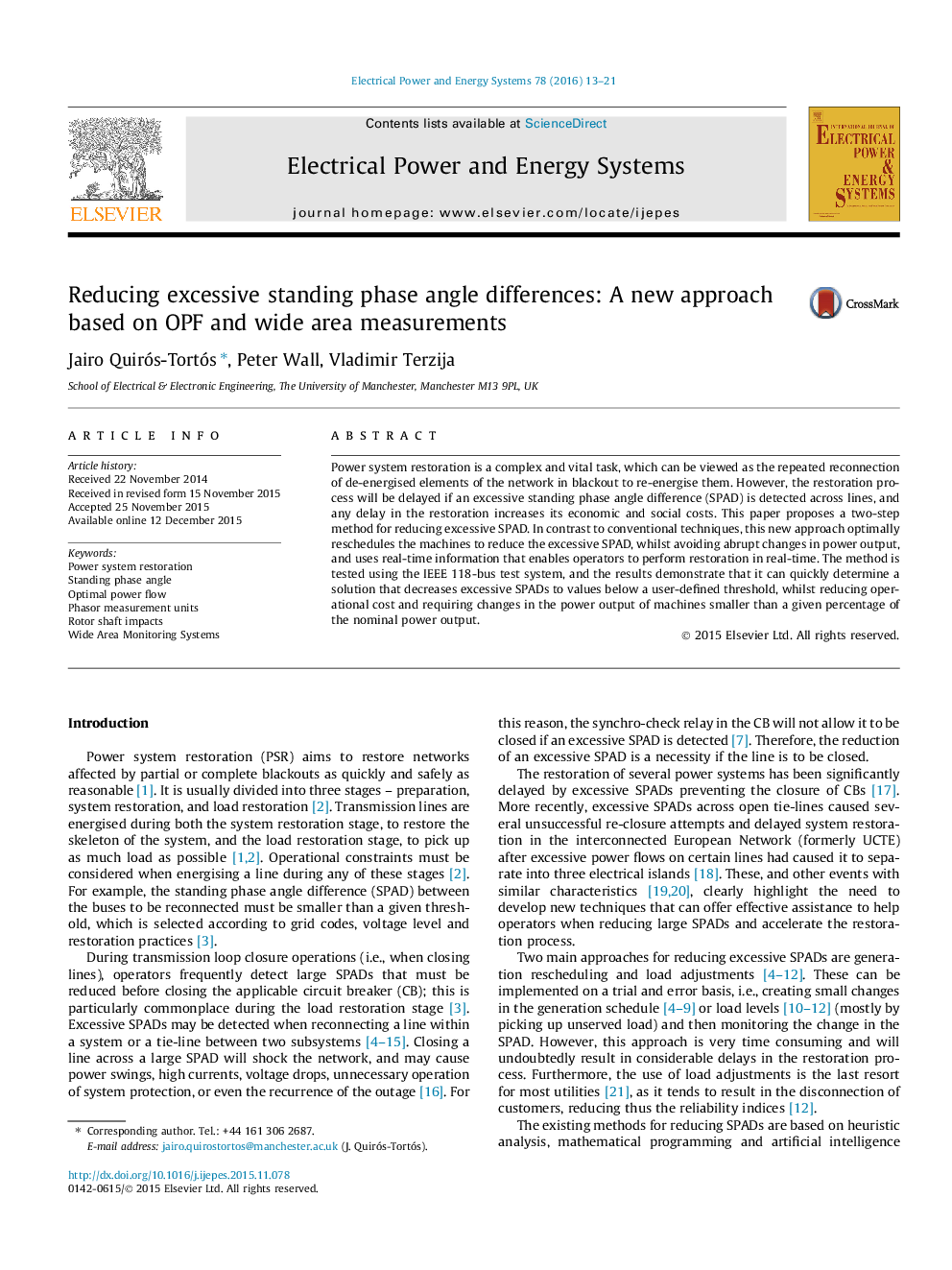| Article ID | Journal | Published Year | Pages | File Type |
|---|---|---|---|---|
| 398405 | International Journal of Electrical Power & Energy Systems | 2016 | 9 Pages |
•This paper proposes a two-step method for reducing excessive phase angle differences.•The machines are rescheduled to reduce the excessive SPAD, whilst avoiding abrupt changes in power output.•The approach uses real-time information that enables operators to quickly perform restoration.•The method is tested using the IEEE 118-bus test system.
Power system restoration is a complex and vital task, which can be viewed as the repeated reconnection of de-energised elements of the network in blackout to re-energise them. However, the restoration process will be delayed if an excessive standing phase angle difference (SPAD) is detected across lines, and any delay in the restoration increases its economic and social costs. This paper proposes a two-step method for reducing excessive SPAD. In contrast to conventional techniques, this new approach optimally reschedules the machines to reduce the excessive SPAD, whilst avoiding abrupt changes in power output, and uses real-time information that enables operators to perform restoration in real-time. The method is tested using the IEEE 118-bus test system, and the results demonstrate that it can quickly determine a solution that decreases excessive SPADs to values below a user-defined threshold, whilst reducing operational cost and requiring changes in the power output of machines smaller than a given percentage of the nominal power output.
